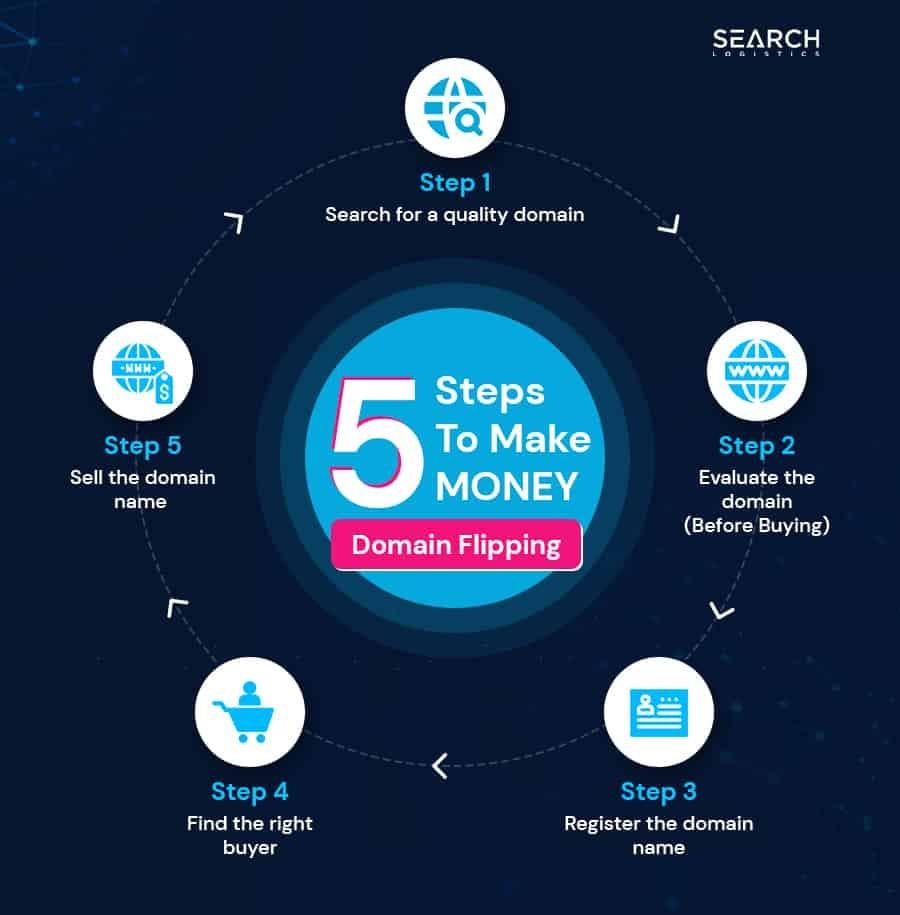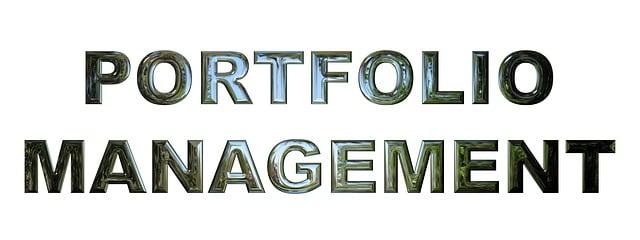Table of Contents
- Understanding the Domain Flipping Landscape
- Identifying Profitable Domain Names
- Mastering the Art of Buying Low and Selling High
- Crafting Effective Marketing Strategies for Domain Sales
- Building a Sustainable Domain Portfolio
- Q&A
- Closing Remarks


Understanding the Domain Flipping Landscape
Domain flipping is a strategic endeavor that involves purchasing domain names at low prices with the intent of selling them at a profit. To navigate this landscape effectively, it’s crucial to understand the key components that influence domain value. Factors such as domain length, keyword relevance, and extension type play significant roles in determining how much a domain can fetch in today’s market.
Investors should familiarize themselves with different tiers of domains. Here are some categories to consider:
- Premium Domains: Often short and keyword-rich, these domains are sought after for their potential to drive traffic and enhance brand recognition.
- Brandable Domains: Unique and catchy names that can be developed into a brand; they often do not contain popular keywords.
- Expired Domains: Domains that were previously registered but are now available again; they may come with existing traffic or backlinks, adding to their value.
Understanding market trends is essential for anyone looking to succeed in this field. To give you an edge, keep an eye on the latest trends in domain sales and technology. Below is a simplified table that highlights common domain extensions and their typical value perception:
| Domain Extension | Typical Value | Common Usage |
|---|---|---|
| .com | High | Businesses, eCommerce |
| .net | Medium | Networking, ISPs |
| .info | Low | Informational Sites |
Acquiring the right domains is about leveraging insights from the market and aligning with consumer trends. Regularly assessing your domain portfolio through analytics can aid in recognizing growth opportunities and making informed investment decisions.


Identifying Profitable Domain Names
When it comes to navigating the world of domain flipping, recognizing lucrative names is crucial for ensuring a profitable venture. High-value domain names often possess specific characteristics that can signal their potential worth. A memorable and easy-to-spell name increases brand recall, while relevance to trending topics or niches can drastically enhance demand. Consider examining current popular search terms or industries, as these factors can position a domain for future value appreciation.
One effective approach is to explore niche markets that are trending or underrepresented. Domains that cater to emerging technologies, popular hobbies, or specific regional interests can be particularly enticing. Here’s a quick checklist to consider when identifying these names:
- Length: Shorter is often better; aim for names with 1 to 3 words.
- Keywords: Incorporate relevant keywords that potential buyers may be searching for.
- Extensions: While .com domains are highly sought after, don’t overlook popular alternatives like .io or .co.
To further refine your search, using tools and resources tailored for domain research can be invaluable. Domain auction sites and expired domain databases provide insights into recent market trends and valuation. Below is a simple comparison table of popular domain marketplaces:
| Marketplace | Features | Best For |
|---|---|---|
| Flippa | Wide variety of listings, auction format | Beginner flippers |
| Sedo | Global reach, appraisals available | International buyers |
| NameJet | Focus on expired domains, bidding system | Experienced investors |


Mastering the Art of Buying Low and Selling High
Successfully navigating the domain flipping landscape requires a keen understanding of market dynamics. You must cultivate the ability to identify undervalued domains that hold potential for appreciation. Start by researching trending keywords and niche markets. Utilize tools like Google Trends and industry-specific forums to spot emerging topics. Evaluate domain length, relevance, and potential brandability. Remember, a memorable domain name can significantly influence its resale value.
When it comes to acquiring domains, consider leveraging various purchasing strategies. This includes participating in domain auctions, negotiating with current owners, or exploring expired domain lists. Prioritize domains that can drive traffic based on existing search volume and relevance. Here are some effective tactics to enhance your acquisitions:
- Patience Pays Off: Wait for the right opportunity to buy.
- Domain Extensions Matter: Choose between .com, .org, and .net to maximize appeal.
- Keep It Short: Shorter domains are generally easier to remember.
Once you’ve secured your domains, the next step involves marketing them effectively. Craft compelling listings that highlight each domain’s unique advantages and potential uses. Utilize platforms like Sedo, Flippa, or even your own website to showcase your inventory. Here’s a quick comparison to help you choose the right platform:
| Platform | Fees | Audience |
|---|---|---|
| Sedo | 10% commission | Global buyers |
| Flippa | $10 listing fee + 10% after sale | Investors and entrepreneurs |
| Your Own Website | Variable (hosting costs) | Direct audience |
By mastering the nuances of buying low and selling high, you can turn domain flipping into a profitable venture. Stay informed of market trends, refine your negotiation tactics, and continuously adapt to changing buyer preferences. With dedication and strategic planning, you’ll find success in this unique online marketplace.
Crafting Effective Marketing Strategies for Domain Sales
When delving into the world of domain flipping, it’s crucial to develop effective marketing strategies that appeal to potential buyers. One way to achieve this is by identifying your target audience. This involves researching demographics, preferences, and behaviors of individuals or businesses likely to be interested in purchasing your domains. You can utilize tools like Google Analytics and social media insights to gather valuable data. Once you understand who your buyers are, you can tailor your marketing messages accordingly.
Another key aspect is to create an attractive online presence for your domains. Consider building a dedicated website or landing page for each domain you intend to sell. Ensure that each page includes high-quality visuals, clear descriptions, and relevant information that showcases the domain’s potential value. To further enhance visibility, utilize SEO best practices such as:
- Incorporating target keywords in your content
- Optimizing meta titles and descriptions
- Building quality backlinks to your pages
Utilizing various marketing channels can also significantly boost your marketing efforts. You can leverage social media platforms, online marketplaces, and domain forums to reach potential buyers. Here’s a simple table showcasing effective marketing platforms:
| Platform | Purpose | Notes |
|---|---|---|
| Engagement with domain enthusiasts | Use relevant hashtags | |
| Building community and showcasing domains | Create a business page | |
| Flippa | Direct domain sales and auctions | Highly trafficked marketplace |
| Connecting with businesses and professionals | Network strategically |
don’t underestimate the power of excellent customer service throughout the selling process. Respond to inquiries promptly, provide detailed answers about the domains, and be transparent about the buying process. Building a reputation for reliability can lead to repeat customers and referrals, enhancing your overall sales success.


Building a Sustainable Domain Portfolio
When diving into domain flipping, establishing a portfolio that is both diverse and sustainable is crucial for long-term success. A carefully curated selection of domains will not only enhance your flip potential but also help mitigate risks associated with market fluctuations. Focus on acquiring domains that offer value, attracting users with relevant keywords and top-level extensions that resonate with your target audience. This approach helps ensure your portfolio appeals to a broader range of buyers.
To build a strong portfolio, consider the following strategies:
- Keyword Research: Identify emerging trends and popular search terms to ensure your domains are equipped for future demand.
- Quality over Quantity: Prioritize the acquisition of premium domains instead of amassing a large quantity of mediocre options.
- Diverse Niche Focus: Invest in various niches to broaden your market reach, reducing dependency on a single sector.
Additionally, it’s important to regularly evaluate your domain portfolio. Set aside time for routine assessments, analyzing metrics such as traffic, search engine rankings, and market demand. You might find a table helpful to track key statistics for your domains:
| Domain Name | Traffic (Monthly) | SEO Ranking | Market Value ($) |
|---|---|---|---|
| example-domain1.com | 1,200 | 15 | 1,500 |
| example-domain2.com | 950 | 22 | 800 |
| example-domain3.com | 500 | 10 | 2,300 |
By following these guidelines and maintaining consistent evaluations, you will be on the right track to that not only generates profits but also positions you effectively in the ever-evolving domain flipping landscape.
Q&A
Q&A: Learning Domain Flipping
Q1: What is domain flipping?
A1: Domain flipping is the process of buying domain names at a low price and then selling them at a higher price. The goal is to identify undervalued or high-potential domain names, purchase them, and then market them effectively to potential buyers. It’s akin to real estate investing but in the digital realm.Q2: How do I get started with domain flipping?
A2: To start flipping domains, you’ll need to follow a few key steps:- Research: Learn about the domain market, including popular extensions (.com, .net, etc.) and trends.
- Purchase Domains: Use domain registrars like GoDaddy or Namecheap to buy domains that you believe have potential.
- Develop Your Portfolio: Acquire a variety of domains that target different niches.
- Market Your Domains: List your domains on marketplaces or promote them through social media and SEO strategies.
Q3: What criteria should I look for when selecting a domain to flip?
A3: When selecting a domain for flipping, consider the following criteria:- Domain Extension: .com domains often have a higher resale value.
- Length: Shorter names are usually more desirable.
- Keywords: Domains with popular or trending keywords can attract more buyers.
- Brandability: Choose names that are catchy and easy to remember.
- Traffic Potential: Domains with existing traffic or backlinks can be more valuable.
Q4: Where can I sell my domains once I acquire them?
A4: There are several platforms where you can sell your domains, including:- Marketplaces: Websites like Sedo, Flippa, and GoDaddy Auctions are popular for listing domains.
- Domain Broker Services: Hiring a broker can help you sell higher-ticket domains.
- Social Media: Promote your domains on forums, Facebook, or Twitter groups focused on domain trading.
- Your Own Website: Setting up a simple portfolio site can also attract interested buyers.
Q5: How much money can I expect to make from domain flipping?
A5: The amount of money you can make from domain flipping varies widely. Some flippers might earn a few hundred dollars per domain, while others might see profits in the thousands for premium domains. Success depends on your ability to select valuable domains, effective marketing strategies, and market demand.Q6: Are there any risks involved in domain flipping?
A6: Yes, like any investment, domain flipping comes with its risks:- Market Fluctuations: The value of domains can change based on trends, making it possible to purchase domains that become less desirable.
- Investment Losses: There’s no guarantee that you will sell a domain for a profit; some may sit unsold for long periods.
- Legal Issues: Be cautious of trademarks and copyrights to avoid legal issues with the domains you purchase.
Q7: How can I sell domains quickly?
A7: To quicken the sales process, consider these strategies:- Competitive Pricing: Set prices that are attractive but still reflect the domain’s value.
- SEO Optimization: Use relevant keywords in your listings to make them more discoverable.
- Network Effectively: Engage with communities and forums related to domain flipping to build connections and promote your domains.
- High-Quality Listings: Create compelling descriptions and visuals to make your domains stand out.
Q8: Is domain flipping suitable for everyone?
A8: Domain flipping can be a lucrative side hustle or full-time endeavor, but it isn’t for everyone. It requires a keen understanding of the market, a willingness to invest time in research, and a bit of financial capital upfront. If you enjoy entrepreneurship and have an eye for trends, it could be an excellent fit for you!Q9: What resources can help me learn more about domain flipping?
A9: There are numerous resources available to help you deepen your knowledge of domain flipping:- Online Courses: Platforms like Udemy or Coursera often offer courses focused on domain investment.
- Books & E-books: Look for titles diving into digital marketing or domain investment strategies.
- Webinars and Podcasts: Many experts share their knowledge through these mediums.
- Forums: Website forums like NamePros provide community insights and advice from experienced flippers.

